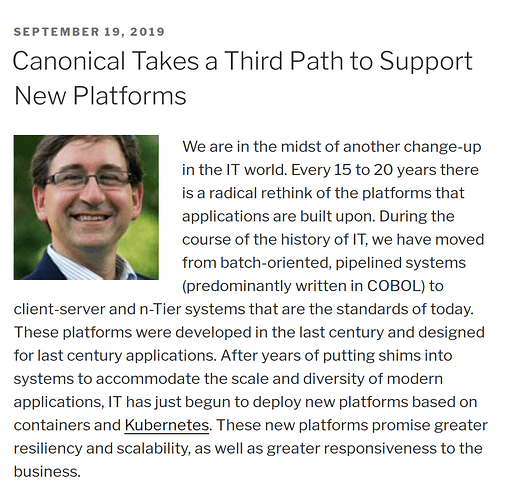Tom Petrocelli, Research Fellow at Amalgam Insights has posted about Juju recently: “Canonical Takes a Third Path to Support New Platforms”.
It’s great to see some of our enthusiasm for software modeling being shared by others:
We are in the midst of another change up in the IT world. Every 15 to 20 years there is a radical rethink of the platforms that applications are built upon. During the course of the history of IT we have moved from batch-oriented, pipelined systems (predominantly written in COBOL) to client-server and n-Tier systems that are the standards of today. These platforms were developed in the last century and designed for last century applications. After years of putting shims into systems to accommodate the scale and diversity of modern applications, IT has just begun to deploy new platforms based on containers and Kubernetes. These new platforms promise greater resiliency and scalability, as well as greater responsiveness to the business.
[…]
Canonical, however, is creating a third path to new platforms. At the Canonical Analyst Day (September 12, 2019) in New York City, Canonical CEO Mark Shuttleworth articulated a different vision for Kubernetes platforms than is typically expressed by vendors. Based on their Juju and Charms toolset, Canonical hopes to offer the benefits of the curated experience and the flexibility of the DIY. With Charms, Canonical hopes to encapsulate best practices and integrations, in effect curating the parts. Instead of combining these into a set platform, they are offering Juju as a way to combine these parts, Lego like, into a custom platform. Charms describes what the software should be; Juju says where the software should go. At the component level, Charms knows how to configure, provision, and deploy a piece of software while Juju knows the existing infrastructure and where a Charmed component can and should go. [emphasis added]
